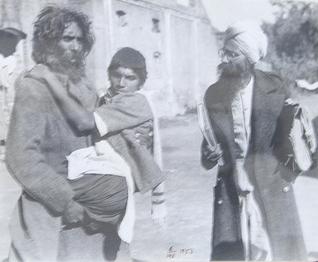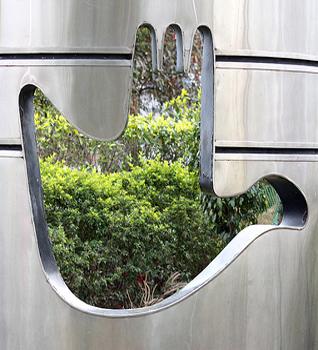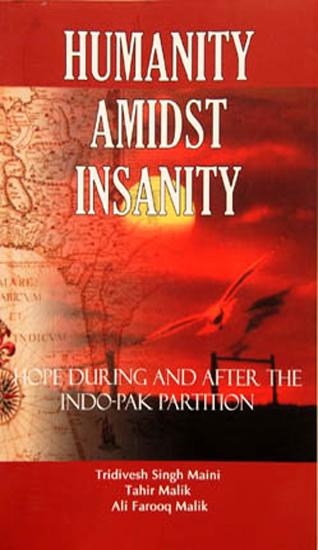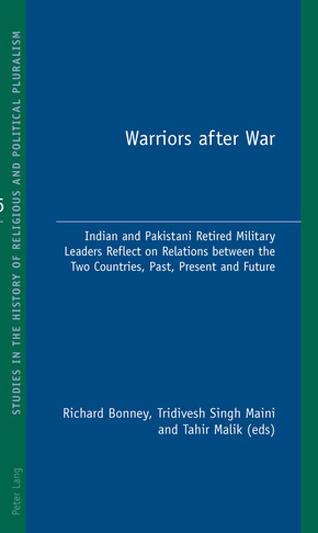Partition
The Other Side of Partition
by TRIDIVESH SINGH MAINI
Two recent events bring to light major drawbacks in the way India and Pakistan approach the past and the present.
First, one of the recommendations that was announced at the recent talks between the Indian and Pakistani foreign secretaries was to exempt individuals over the age of 65 from seeking visas to visit the other country.
This has been a long-pending demand, and many believe that it is too little coming too late. They are not wrong, because both the countries have ignored the role which the pre-partition generation can play in generating goodwill between both sides.
While it is true that this generation in India did carry a degree of negative baggage vis-à-vis Pakistan, it is important to keep in mind that amidst the trauma and the pain of partition, there are some stories of compassion which have been obliterated and need to be told.
But, these stories got overshadowed by the national history project, just as jingoism and national fervour exhibited by the Indian media have overshadowed the second important event - where Pakistani human rights activist Ansar Burney’s trust rescued Indian sailors. While there has been a mention of Burney’s stellar role in rescuing these sailors, it stands pale in comparison to the criticism of Pakistan by the Indian media.
It must be mentioned that the humane dimension of the partition is not an act of romanticisation or exaggeration, as in at least 25 to 30 per cent of the cases where members of one community rescued those of another. Such episodes are unknown, and the stories remain untold as they have got obscured in the larger atmosphere of tension and hatred.
Seldom has there been a structured attempt to document such episodes.
Mushirul Hasan, a prominent historian, was amongst the first to bring to light stories such as that of Khushdeva Singh, who rescued numerous Muslims during the partition riots.
In her book "The Great Divide," Yasmin Khan too draws attention to such instances.
If one were to point to some books or projects which have specifically dealt with humane episodes and helped in beginning the process of reconciliation, the ones by sociologist Ashis Nandy and writer Rajmohan Gandhi stand out.
I would also like to make a mention that this author co-authored a book "Humanity Amidst Insanity: Hope during and after the Indo-Pak Partition" in 2008 with two Pakistani writers, which attempted to highlight the compassionate stories. It will not be incorrect to say that I did not realise the significance of this unexplored dimension of history until I embarked on writing the book. Some of the findings of the book were truly fascinating and nothing less than revelations for me.
It showed that religious preachers saved individuals from other communities, specifically women and children. Interestingly, religious shrines were used for hiding these individuals from attacking mobs. This came as a surprise to authors because, for long, faith has been presented as the main cause of the partition. Out of the 22 cases documented, there were five such cases on both sides, and there must be many more which remain undocumented.
In one case, a senior Muslim politician had sent his Muslim assistants to escort his non-Muslim friends to a rescue camp. The assistants, however, killed some of these people. On learning of this betrayal of trust, the politician could not control his wrath and actually murdered his assistants. This episode underlines the fact that for such people friendship and honour are paramount.
While the partition literature has spoken about revenge against members of ‘other’ communities, it has seldom made mention of such instances. It will not be incorrect to say that with all its flaws, oral history has the ability of bringing out facts which are not common knowledge.
In another case, a Muslim family migrating from Amritsar to Lahore had fled along with two Sikh girls, whose father was abroad at the time of the rioting. While, on the one hand, they were eager to save their own lives, they took along the two girls, which was perilous to say the least. The girls were brought back to Amritsar, once violence ebbed months after the partition.
The point that until August 14, 1947, many non-Muslims were not sure that they would have to migrate to India has been made by Parkash Tandon, who has stated, “We Hindus and Sikhs have lived under the Muslims before, then under the Sikhs and the British, and if we are now back under Muslim rule, so what? We shall manage somehow, as we have managed before.”
In our research, two cases of Sikhs unfurling the Pakistani flag came out.
I would also like to make the point here that the use of oral history was critical in learning about the above mentioned points, because they are individual experiences. Such individual experiences have not been sufficiently documented in written scholarship. While partition fiction has made commendable efforts to portray the humane dimension and compassion, it tends to be dismissed as mere nostalgia. The survivors of the riots have some very interesting facts and insights to offer, which have been overlooked because of inadequate use of oral history.
It is crucial to make use of this oral history, as the survivors of the partition, who have vivid impressions of that cataclysmic event, are withering away, and a lot of interesting and important facts are in threat of being obliterated.
A survivor of Auschwitz is not wrong when he says: “Today, the last living survivors of the Holocaust are disappearing one by one. Soon, history will speak about Auschwitz with the impersonal voice of researchers and novelists at best, and at worst in the malevolent register of revisionists and falsifiers who call the Nazi Final Solution a myth. This process has already begun.”
It is important that both sides promote projects, possibly joint projects, which bring to light some of the instances discussed above, which have been obliterated and overshadowed. It is also important to drive home the point that the partition resulted in human suffering on both sides, just as the present acrimony between the two countries is damaging both equally. It needs many more Ansar Burneys to blunt the sense of jingoism, hysteria and hatred, which has brainwashed numerous Indians and Pakistanis.
Tridivesh Singh is Associate Fellow at The Observer Research Foundation. He is also a co-editor of "Warriors after War: Indian and Pakistani Retired Military Leaders Reflect on Relations between the Two Countries, Past, Present and Future," recently released by Peter Lang Publishers.
[Courtesy: Tehelka]
July 8, 2011
Conversation about this article
1: Baldev Singh (United Kingdom), July 09, 2011, 4:28 PM.
Indians, Pakistanis and Bangladeshis are going to be 2,000,000,000 (2 billion ) very shortly and mostly Hindu and Muslims. Most decent educated and honest people on Earth reject these two unacceptable ideologies based on superstition, magic and systematic hatred and abuse of the female. Partition was evil but these people have learned nothing, it's business as usual. Caste, dowry, boy-child preference, superstition, magic and now, world domination through state-sponsored terrorism.
2: Jesroshan Singh (Malaysia), July 10, 2011, 10:24 PM.
The Mughals made Sikhs and Hindus suffer and then in 1947, they blamed us for their suffering and asked for a separate land. That's like spitting on my face and asking me to apologize to the spitter.






